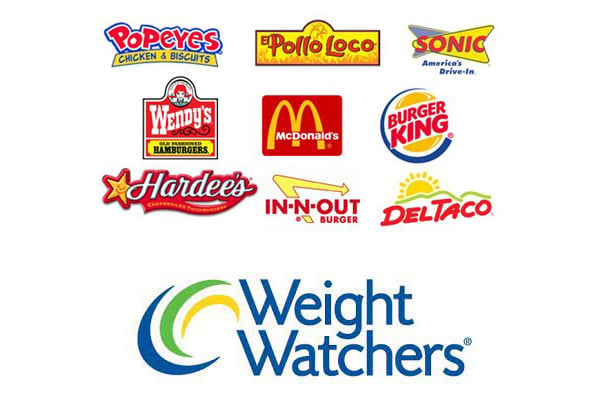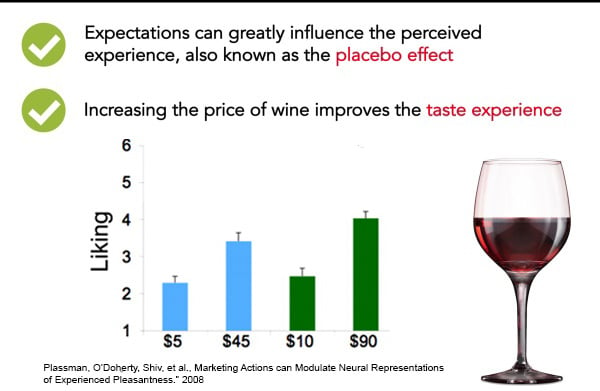Think about the last great meal that you had. Can you picture it in your mind? If I asked you to describe it, you'd probably talk about the flavor or the tenderness or maybe it was juicy? But did you know that the brain tastes food long before it even hits your tongue? Everyone knows that presentation is a huge part of the dining experience. But when we sit down for a meal, we unconsciously take in everything around us: the lighting, the temperature, the music, the cutlery… everything. And all of these factors influence the mental model our brain creates of that meal before it ever even gets to our lips. The exact same meal will taste completely different when eaten in a bright white cafeteria than a fancy restaurant with candles and fresh cut flowers on every table.
Color psychology has been used in branding for a long time. Think of your favorite fast-food restaurant. What colors do you see? Red is the color most used by fast food chains, followed closely by yellow and orange. Yellow and orange are colors that make people feel hungry. The color red is associated with emotion and passion. It will also get our attention which is why it’s the color of stop signs. Green and earthy tones for usually used for eco-friendliness, natural, organic, healthy food choices. Blue is an appetite suppressant. Do you think it’s a coincidence that Weight Watchers is branded in blues and greens?

Mental Models and Our Senses
When it comes to creating mental models, our senses are not created equal. Since almost 1/3 of the brain is dedicated to processing and interpreting images, vision is by far the strongest of the senses. The second most dominant is hearing. While driving, have you ever turned down the radio when searching for a particular street? That’s your vision dominating the incoming data.
A fascinating explanation of vision dominating our perception is the McGurk effect. Imagine watching a video of someone repeat the sound bah. Now, suppose there is a second video of the same person repeating the sound fah. Surely, if the audio tracks of the videos were switched, you would be able to tell the difference, right? Try it and see.
Because vision dominates our perception, the sound you see wins. Even though the sound you hear may be bah, the brain defaults to what we see and, ultimately, we’ll hear fah.
Taste is the weakest of all the senses and, for that reason, it’s the most impressionable. Research shows that we perceive flavor as a multisensory construct of our senses stitching the experience together piece by piece. Our most memorable meals are always comprised of the overall experience. The flavor of the food is often one of the last factors the brain considers when evaluating a meal.
For example, texture is one of the most determining factors in regard to how much we will enjoy a dish. This is especially true for children, but it’s also true for adults. Imagine a perfectly prepared pan seared Chilean sea bass with lemon caper butter, creamy garlic cauliflower mash, and roasted broccoli. Got it? Okay, now imagine throwing the whole dish into a blender. All the flavors are still there, right? Uh... no. If texture didn’t influence our perception of flavor, that blended concoction wouldn’t seem so gross.
And it isn’t just the texture of food that makes a difference in the dining experience. Our mental models are shaped by everything from the menu to the cutlery and glassware. Studies show that heavier menus, as opposed to lighter ones, drive perceptions of food quality and higher expectations of service.
The weight of the container also influences how we enjoy the food inside. In one study, three bowls, identical except for the fact that they were different weights, were filled with exactly the same yogurt. Participants were asked to evaluate the yogurt from the three bowls holding them with one hand, one at a time. Then they rated flavor intensity, density, price expectation, and overall enjoyment. Significant effects were found for all attributes except for flavor intensity.
The team at the Crossmodal Laboratory in Oxford found that simply using high-quality cutlery normally reserved for banquets resulted in customers willing to pay fifteen percent more for their food, compared to people eating the same meal with lower-quality utensils.
Our mental models are even more heavily influenced by our beliefs. In fact, our beliefs supercharge our perceptions. There are countless studies showing that if people believe they are drinking expensive wine, they enjoy it more. But one piece of research went a step further. Baba Shiv and his research team at Stanford used an fMRI machine to observe the pleasure center of participants brains (nucleus accumbens) as they tasted two different glasses of wine. The first wine was identified by its real bottle price of $5 and by a fake $45 price tag. The second wine was marked with its actual $90 price and by a fictitious $10 tag. The catch was that both wines came from the same bottle.

The researchers found that an increase in the perceived price of a wine did lead to increased activity in the pleasure center because of an associated increase in taste expectation. Simply put, the brain enjoyed the expensive wine more even though the tongue was experiencing exactly the same thing!
Eating is one of the most multisensory events that we do every single day. Every meal is a combination of shapes, smells, textures, and sounds in addition to taste. By paying attention to how each contributes to the meal, we can actually improve the way the brain enjoys food!








